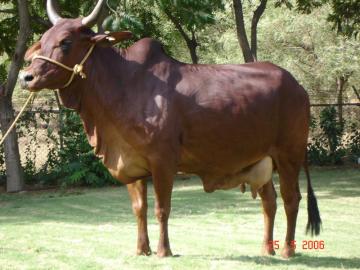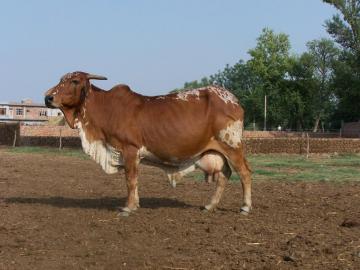In India, cows are integral to the rural hinterland and our culture. Cows sustain our life in many way be it providing milk and dairy products to helping in agriculture. In this article, we will explore India’s 20 Most Popular Cows Of Indian Breed: The Divine Dairy Herd. An indepth list of Most Popular Cows Of Indian Breed
India has a long history of farming. Many cow breeds have been important to the country’s dairy business for hundreds of years.. Each breed brings its unique characteristics and benefits to the farmer. With so many breeds, how do you know which ones are the best for your needs?
An Initiative: Celebrating India’s Indigenous Cow Breeds
Nuteq Entertainment has over 30 years of experience as a broadcast media specialist. We are proud of our YouTube channel, which has over 2 lakh subscribers and 20 million views. Our videos on agriculture is very popular with farmers and entrepreneurs.
This video shared above has over a million views. We’re committed to giving our audience well-made content. Our endeavor through this article is to showcase wide variety of Indian cow breeds. And highlight their unique features.
Dive into the world of these divine creatures. This comprehensive guide will inspire you. Whether you’re a farmer looking to expand your herd or curious about Indian cow breeds, Join us on this journey. We celebrate these magnificent bovines that have graced the Indian culture for centuries.
Importance of Cow Breeds in India
Indian cow breeds hold immense importance in the agricultural landscape of the country. Hindus worship the cow, as they call it, “the mother of the earth,” It does so much. Every single thing a cow makes is good for people.
सर्वकामदुधे देवि सर्वतीर्थीभिषेचिनि ll
पावने सुरभि श्रेष्ठे देवि तुभ्यं नमोस्तुते ll
Cow Mantra to praise Gomata
They have been a part of Indian culture for thousands of years and is pious to Hindus. These cows are not only revered for their milk but also for their contribution to the ecosystem.
India has 27 indigenous breeds of cattles. Out of these, seven is recognize breeds of buffalo. Globally there is around 800 cattle varieties globally. ICAR_NBAGR there are 53 Registered Breeds of Cattle in India. Here is the comprehensive list- Gir, Sahiwal, Red Sindhi, Tharparkar, Rathi, Ongole, Deoni, Hallikar, Kankrej, Hariana, Krishna Valley, Nimari, Gaolao, Punganur, Kangayam, Vechur, Bargur, Amrit Mahal, Khillar, Kherigarh, Malvi, Malnad Gidda, Siri, Bachaur, Nagauri, Malvi, Nimari, Kenkatha, Bachaur, Mewati, Ongole, Punganur, Pulikulam, Umblachery, Kherigarh, Red Kandhari, Mewati, Khillar, Umblachery, Kherigarh, Vechur, Nimari, Kenkatha, Punganur, Pulikulam, Red Kandhari.
The diversity of cow breeds in India is a testament to the country’s rich biodiversity.
Historical Significance: Cow Breeds in India
Historical significance of cow breeds in Indian culture dates back to ancient times. Considering cows as a symbol of wealth and prosperity and were often given as gifts to kings and nobles. They were also used as a form of currency and played a crucial role in the barter system. Cow dung and urine is useful for fuel, fertilizer and medicinal remedies. The cow is a source of nourishment and sustenance. It provide us milk, ghee, curd, and other dairy products that are integral to Indian cuisine.
The Role of Cow Breeds in the Dairy Industry
Cow breeds in India play a pivotal role in the country’s dairy industry. India is the world’s largest milk-producing nation. India’s dairy market was worth INR 14899.8 billion in 2022. It is is estimate to grow to worth INR 31185.7 billion by 2028, a CAGR of 13.2%.
Indian cow breeds contribute to the production of dairy products. The unique milk composition from different cow breeds makes it suitable.
The dairy industry provides employment opportunities to millions nationwide. It is a vital sector that supports farmers and dairy workers. Milk processors and distributors contribute to rural livelihoods and food security and nutrition.
Distinguishing Features of Indian Cow Breeds
Indian cow breeds have distinct physical attributes. It set them apart from their counterparts in other parts of the world. These cows have a hump on their back, known as the “Surya ketu nadi“. It absorb cosmic energy and provide various health benefits.

They also have a develop, a loose fold of skin under their neck, which helps them cool down in hot climates. The horns of Indian cow breeds are long and curved, adding to their majestic appearance. The milk production capacity of Indian cow breeds varies depending on the breed.
Also Read: How does Bee Farming works: Complete Profitable Beekeeping Business Guide
Indigenous Cow Breeds vs. Exotic Cow Breeds
Indian cow breeds is into two categories: indigenous and exotic.
Indigenous cow breeds, or desi breeds, are native to the Indian subcontinent. They have evolved over thousands of years to adapt to the local environment. These breeds are well-suited to the Indian climate. We know them for their hardiness and disease resistance. These species are well adapted to utilise local feed resources.
Exotic cow breeds, , are imports from other countries for crossbreeding and hybridization purposes. These breeds have high milk production capacities and specific traits.
Exotic cow breeds contribute to increasing milk production in India. The indigenous cow breeds for sustainable and organic farming practices.
Efforts to conserve and promote indigenous cow breeds through government initiatives. Also there is several community-led conservation programs.
20 Most Popular Cow Breeds of India: Indigenous Cows of India
Sahiwal: “The Champion Dairy Breed”
Binomial Nomenclature: Bos (primigenius) indicus
Nickname: Lambi Bar, Montgomery, Lola, Teli & Multani
Color: Reddish brown to red color
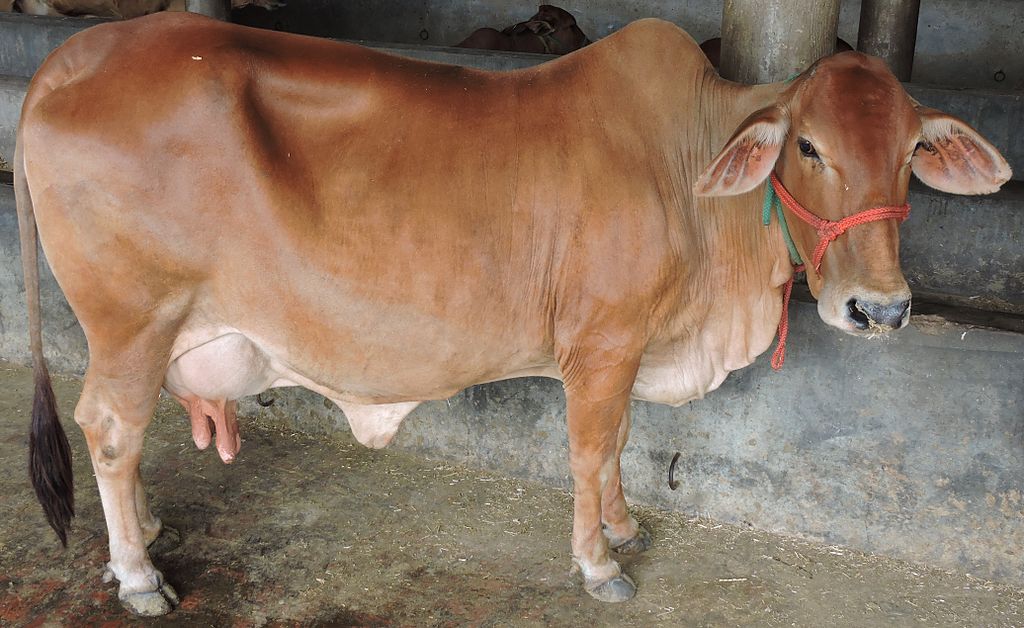
History
Sahiwal cattle are a subspecies of the Zebu species. The Sahiwal is native to Pakistan’s Montgomery (now Sahiwal) district. Traditional “Charwaha” herders once kept them in considerable numbers. The Sahiwal is a top dairy breed in both India and Pakistan today.
Distribution of Sahiwal in India
Present in the states of Punjab, Haryana (Rohtak, Karnal, Hisar, and Gurgaon), Rajasthan, and West Uttar Pradesh. The climate in this region is subtropical and dry.
Milk Producing Capacity:
These cows can produce up to 22-25 liters daily with 3.5% milk fat. The average milk production of Sahiwal is 2,325 kilograms. The range of lactation yield is between 1600 and 2750 kg. They have high productivity and milk quality. Sahiwal cows are ideal for commercial dairy farming in India.
Physical Properties of Sahiwal Cows
Sahiwal can range from a deep rusty brown to a bright red. They have different amounts of white on the head, chest, and belly. Males of most breeds have a darker mane, neck, legs, and tail than females. The floppy ears are a hallmark of this particular breed.
- Sahiwal cows have a long lactation period of up to 305 days. This means they can provide milk for almost ten months.
- They have a calm temperament and are easy to handle. Sahiwal cows are not aggressive.
- Sahiwal bulls have strong built with muscular bodies. It is in use for draft and agricultural purposes.
- Sahiwal cows start breeding at a young age of around 15-18 months. They have a long productive life of 12-15 years.
- The average body weight of a Sahiwal cow is around 350-450 kg, while bulls weigh 600-700 kg.
- Sahiwal cows are well adapted to tropical climates and can withstand high temperatures. They are heat tolerant and drought resistant.
Price of Sahiwal Cows
The value of a Sahiwal cow depends on factors such as her milk output, age, and general health. A Sahiwal cow will set you back anywhere from Rs. 60,000 to Rs. 70,000 on average.
If you want a high-yield dairy cow breed in India, the Sahiwal breed is an excellent choice. A Sahiwal cow can provide abundant milk for many years with proper care and feeding. No wonder they are the ‘Milking Champions of India’!
Gir: The Majestic Jewel of Gujarat
Binomial Nomenclature: Bos (primigenius) indicus
Color: Rusty Brown to Golden Yellow
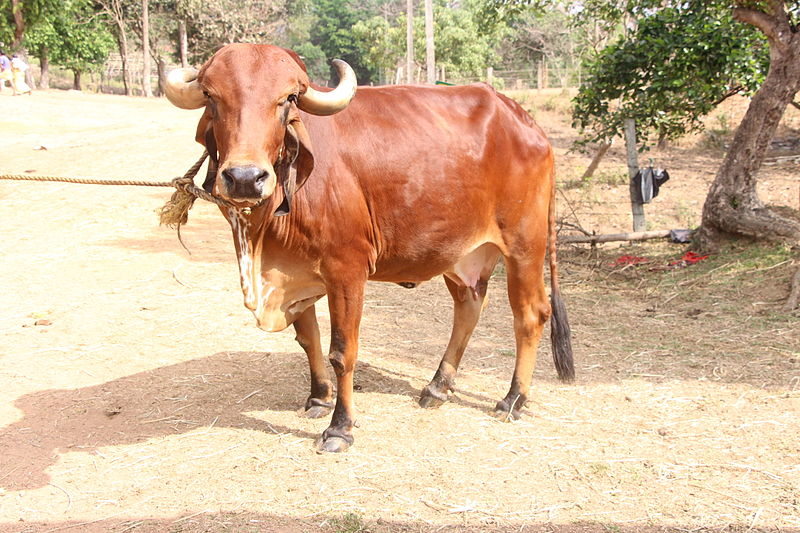
The Gir cow, also known as Kathiawari, is one of the most well-known and popular breeds in India. It is a majestic breed from the Gir forest region of Gujarat, India. This splendid breed has garnered admiration. Recognised for its exceptional qualities, symbolizing pride for the state of Gujarat. One of the top contender for Most Popular Cows Of Indian Breed
History
Gir cows are a subspecies of Zebu cattle. Rever for centuries due to their significance in agriculture and dairy farming. Native to the Gir forest region, they have earned recognition as one of the top dairy breeds in India.
Distribution of Gir in India
The breed is present in the Indian states of Gujarat and parts of Maharashtra. Gir forest, a tropical dry deciduous forest, shapes their adaptability.
Milk Producing Capacity
Gir cows have high milk yield, producing up to 12-16 liters per day, with a fat content of about 4-5%.
Their milk is ideal for making products like ghee, butter, and cheese. Dairy farmers prefer Gir cows due to their excellent A2 milk yield.
Physical Properties of Gir Cows
The Gir cow is medium in size with a typical cow shape and loose skin. It has a prominent hump, loose dewlap, and drooping ears. Gir cows have a wedge-shaped body, a straight back, and a sloping rump.
Key Attributes
- Long Lactation Period: of around 305 days, ensuring a continuous milk supply.
- High Adaptability: well adapted to the tropical climate. They exhibit heat tolerance and are resistance to drought conditions.
- Productive Life: Gir cows have a long productive life of 12-15 years. And provide a consistent milk supply for many years.
- Multipurpose Utility: Gir bulls are sturdy and muscular. Suitable for draft and agricultural purposes.
Price of Gir Cows
The value of a Gir cow depends on factors such as milk yield, age, and health. On average, acquiring a Gir cow may cost between Rs. 70,000 to Rs. 1,00,000.
Gir cows are the “Majestic Jewel of Gujarat,”. It embodies the region’s rich cultural heritage and economic significance. Their exceptional milk production, resilience, and versatile utility make them a cherished breed.
Red Sindhi: The Desert Queen
Binomial Nomenclature: Bos (primigenius) indicus
Nickname: Sindhi Cow, Red Sindhi, Red Karachi, Malir
Color: Deep Red to Mahogany
The Red Sindhi, also known as the Sindhi Cow, is a regal breed from the Sindh region of Pakistan. Renowned for its majestic appearance and exceptional attributes. It is the “Desert Queen.”
History
Red Sindhi cattle have a long and illustrious history. It can be trace to the arid landscapes of Sindh. Over time, they have become a top dairy breed. Red Sindhi is prefer due to their high milk production and resilience in harsh desert.
Distribution
The breed has found in several Indian states, including Rajasthan, Gujarat, and Maharashtra. The adapt to the scorching heat and arid environment.
Milk Producing Capacity
The Red Sindhi cow is vaule for its exceptional milk yield, producing up to 10-12 liters of milk per day. Its nutrient-rich milk boasts a butterfat content of approximately 4-5%.
Physical Properties of Red Sindhi
The cows has striking deep red to mahogany color. It gives them a regal and captivating appearance. Their prominent humps and floppy ears are distinctive features of this majestic breed.
Key Attributes
- Endurance: Red Sindhi cows exhibit remarkable endurance and are well-adapted to challenging environments.
- High Heat Tolerance: Their ability to withstand scorching temperatures and harsh climate conditions.
- Robust Health: The Red Sindhi breed has low maintenance. It makes them cost-effective and easy to rear.
- Versatility: They also serve as reliable draught animals in agricultural activities.
Price of Red Sindhi Cows
The value of a Red Sindhi cow depends on various factors such as milk production, age, and health. On average, acquiring a Red Sindhi cow may range from Rs. 60,000 to Rs. 80,000.
With its majestic beauty and exceptional dairy attributes, it is the “Desert Queen.” Resilience in adverse conditions has earned it a special place.
Rathi: The Dual-Purpose Bovine Beauty
Binomial Nomenclature: Bos (primigenius) indicus
Nickname: Rathi Cow
Color: Light Grey to Dark Grey
The Rathi cow, a magnificent dual-purpose breed, is native to the arid regions of Rajasthan. With its exquisite appearance and versatile utility, it has earned the reputation.
History
Originating from the Rathi tribe in Rajasthan. Local communities breed them for its exceptional traits.
Distribution
Rathi cows is present mainly in the state of Rajasthan. They adapt well to the region’s challenging climate and scarce resources.
Milk Producing Capacity
Rathi cows has milk yield producing around 6-8 liters of milk per day. Their milk is rich in nutrients and is an integral part of local dairy products.
Physical Properties of Rathi Cows
The Rathi cow with striking light grey to dark grey color, giving it an alluring appearance. It has sturdy build and medium to large-sized hump.
Key Attributes
- Versatility: The Rathi cow is a prize for its dual-purpose qualities. Excelling as a milk producer and a robust draught animal.
- Adaptability: This breed has demonstrated to thrive in the harsh and arid environments. It makes it a dependable choice for farmers in such regions.
- Endurance: Rathi cows exhibit excellent endurance and resilience. It is capable of long working hours in the field and challenging climatic conditions.
- Economic Value: Due to its multifunctionality, the Rathi cow plays a crucial role.
Price of Rathi Cows
The value of a Rathi cow depends on factors such as milk production, age, and health. On average, Price of Rathi cow in India may range from Rs. 45,000 to Rs. 60,000.
The Rathi cow, with its captivating appearance and versatile attributes, stands tall. Its contributes to dairy farming and agricultural activities in arid regions. Significant and treasured among farmers and enthusiasts.
Tharparkar: The Thriving Thar Breed
Binomial Nomenclature: Bos (primigenius) indicus
Nickname: Tharparkar Cow
Color: White or Light Grey with Dark Patches

The Tharparkar cow, a thriving breed hailing from the Thar Desert. it has resilience and exceptional adaptability, earning it the title “Thriving Thar Breed.”
History
Originating from the Tharparkar region in Rajasthan, India. The breed has a rich history of coexisting with the harsh desert environment. The cow breed an indispensable part of the local culture and agricultural practices.
Distribution
Tharparkar cows present in the arid regions of Rajasthan. The breed has the ability to withstand extreme heat and scarcity of resources.
Milk Producing Capacity
Tharparkar has milk yield, around 8-10 liters of milk per day. Their milk is rich in nutrients, contributing significantly to local dairy production.
Physical Properties of Tharparkar Cows
Tharparkar cows exhibit a striking appearance. Their white or light grey bodies adorned with distinct dark patches. They have a medium-sized frame and an elegant build.
Key Attributes
- Adaptability: The Tharparkar cow’s exceptional adaptability to the harsh desert climate.
- Drought Resistance: Their ability to thrive with limited water and feed resources.
- Low Maintenance: Tharparkar cows must minimal care and are relatively easy to rear.
- Agricultural Utility: Besides their milk production, they also serve as reliable draught animals.
Price of Tharparkar Cows
The value of a Tharparkar cow depends on factors such as milk production, age, and health. On average, acquiring a Tharparkar cow may range from Rs. 40,000 to Rs. 60,000.
The Tharparkar cow, with its ability to thrive in the unforgiving Thar Desert. Its contributes to dairy production and agricultural tasks in arid regions. The breed’s remarkable resilience makes it cultural significant among the local communities.
Haryana Cows: The Pride of Dairy Farming
The Haryana cows, cherished for their dairy prowess, are a source of pride in Haryana, India. This indigenous breed is priceless for its milk-producing abilities and adaptability.
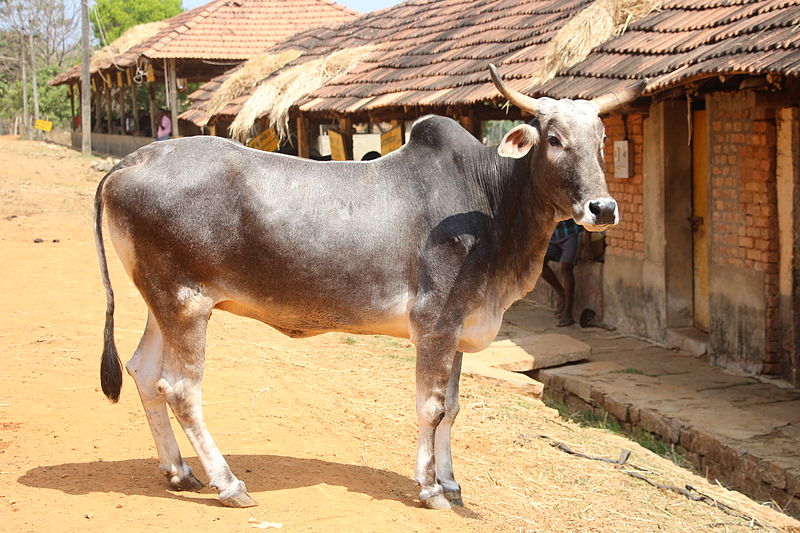
Origin and Characteristics
Generations of farmers have nurtured Haryana cows in Haryana. They boast a sturdy build and a graceful appearance, showcasing their unique traits.
Milk Production
These cows have high milk yield. Providing around 8-10 liters of nutritious milk per day. On average, the breed produces 700-1600 kg of milk per lactation.Their quality milk significantly contributes to the dairy industry in the state.
Resilience and Adaptability
Haryana cows show resilience in challenging climatic conditions. They survive region’s scorching summers and cold winters.
Economic Significance
The breed thrive in local environment and have low maintenance requirements. The cows support rural livelihoods and foster sustainable dairy farming.
The breeds exceptional dairy potential and adaptability make them valuable assets. The cow enhances the state’s dairy industry and rural economies.
Ongole: The Mighty Bulls of Andhra Pradesh
Ongole, a prominent indigenous cattle breed from Andhra Pradesh. Recognize for its mighty and robust bulls. The bulls have exceptional strength and endurance. The Ongole bulls are one of the most powerful draught animals.
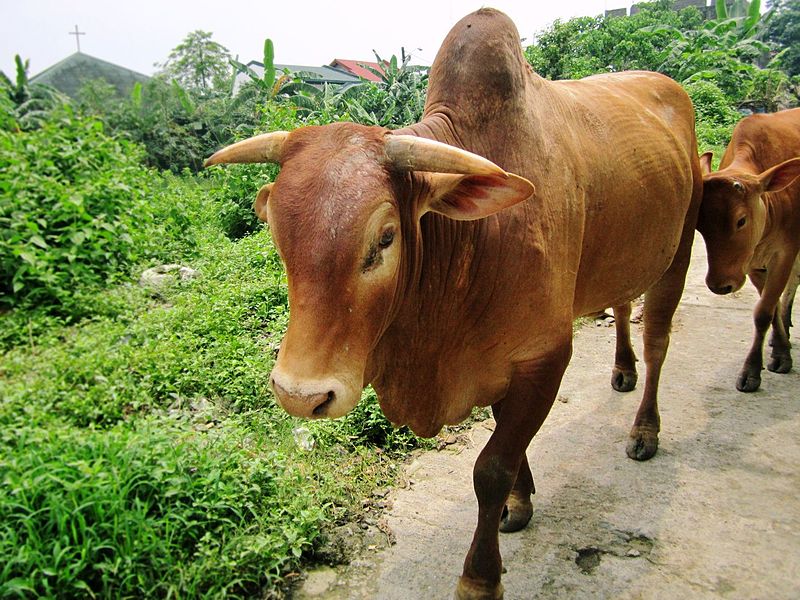
Characteristics and Appearance
Ongole bulls exhibit a majestic appearance with a well-built and muscular frame. They are white or light grey, and their imposing horns add to their impressive demeanor.
Draught Power and Resilience
Ongole bulls is ideal partners for agricultural tasks. They have ability to endure challenging terrains and heavy workloads. An assets to rural farming community.
Cultural Significance
Ongole bulls are an integral part of festivals and traditional events.
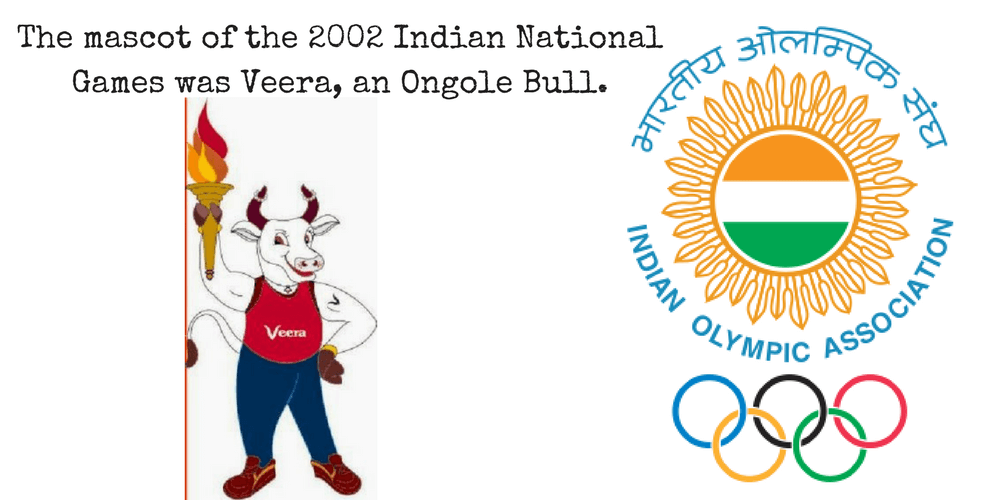
Conservation Efforts
While modern farming practices have led to the decline of native breeds. Efforts are being made to conserve and promote valuable genetic heritage.
Kankrej: The Stalwart Cattle of Gujarat
Kankrej, a sturdy and adaptable indigenous cattle breed from Gujarat. They have resilience and multifunctional capabilities. These cattle are well-suited to the arid and semi-arid regions.
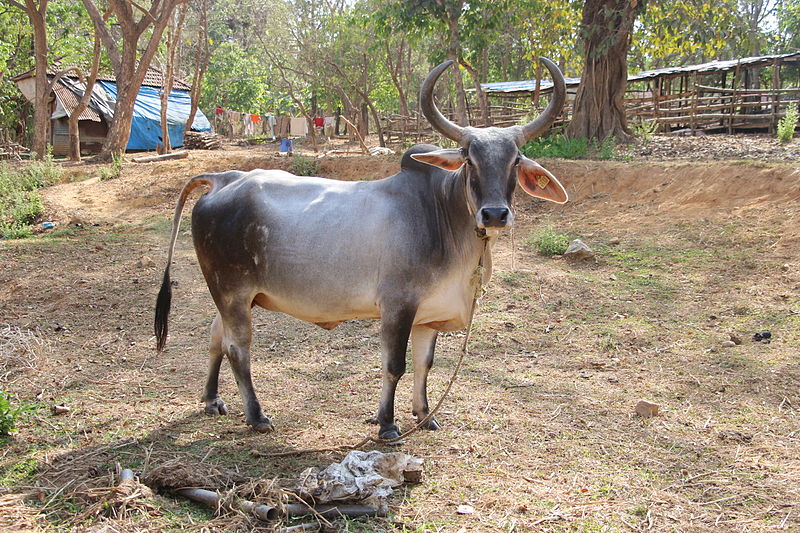
Physical Attributes
Kankrej cattle have distinctive grey to silver-grey coat with compact body structure. They have forward-facing horns and a gentle disposition.
Versatile Utility
Kankrej cows have high milk yield, producing nutrient-rich milk. Additionally, their bullocks is reliable draught animals.
Conservation
Efforts are underway to conserve and promote genetic heritage. It will continue to contribute to Gujarat’s agricultural traditions.
Malvi: The Versatile Indigenous Breed
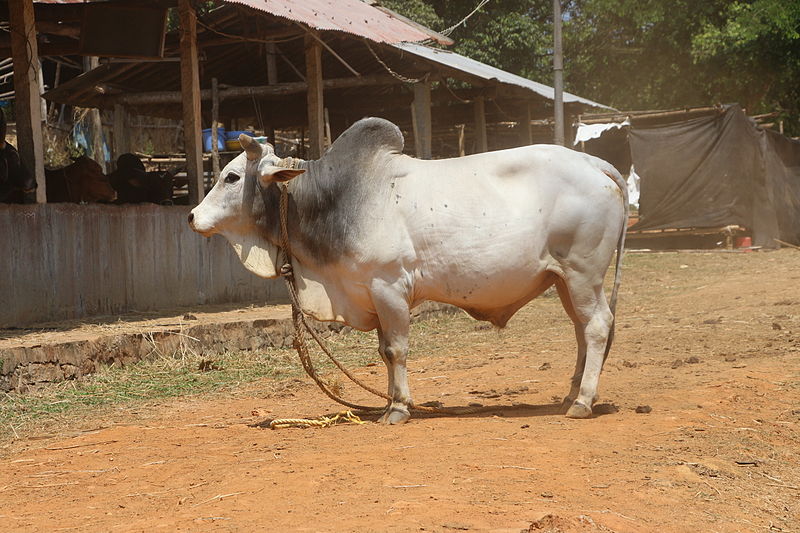
Originating from the Malwa region, India. Malvi cattle is a prize for their adaptability to the local climate.
They exhibit a sturdy build with a distinctive white or light gray coat. Multifunctional, Malvi cows provide milk and draught power.
They contribute to the dairy industry, with an average milk production of 6-8 liters daily.
The breed’s significance lies in sustaining traditional farming practices. The breed support local rural communities.
The average price of a Malvi cow ranges from Rs. 30,000 to Rs. 40,000.
Nagori: The Resilient Work Companion
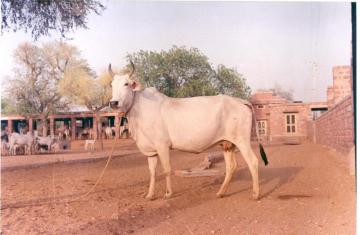
A robust cattle breed from India. The breed favours its strength and endurance in agricultural activities.
Originating in Rajasthan, it boasts a sturdy frame and a distinct white or light grey coat.
It serve as reliable work companions for farmers due to their draught power. They also provide an average milk production of 4-6 liters daily.
The breed’s affordability, with an average price ranging from Rs. 25,000 to Rs. 35,000, makes it an essential asset for rural communities.
Ponwar: The Agile Hill Breed
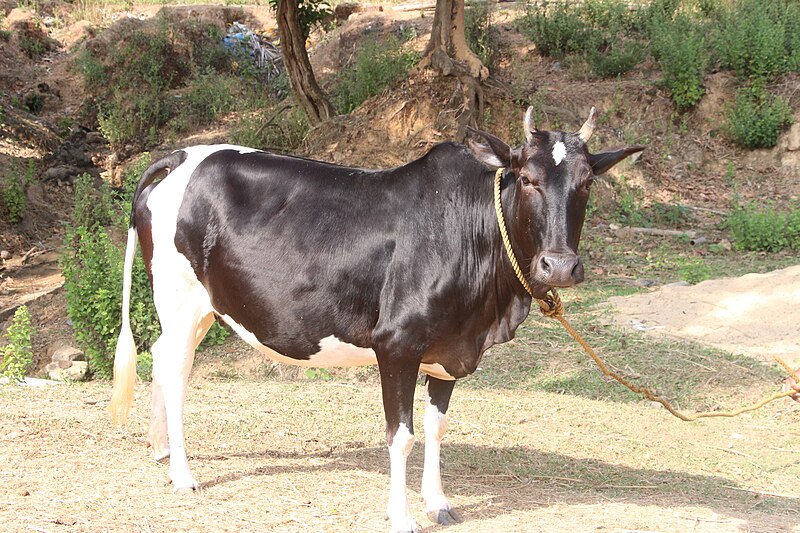
This indigenous breed from Uttarakhand, excels in agility and strength. With a sturdy build, it thrives in hilly terrains. Known for its drought purposes. Ponwar cows contribute to dairy farming, yielding 4-6 liters of milk daily.
With an average price of Rs. 30,000 to Rs. 40,000. They play a vital role in sustaining traditional farming practices. It is supporting Uttarakhand’s agricultural economy.
Bhagnari: The Robust Heritage Breed
Bhagnari, an indigenous cattle breed from Gujarat, India. It has robust build and heritage value. Hailing from the Bhavnagar district. The breed exhibits a distinctive light grey to white coat. Renowned for draught capabilities. Bhagnari cows are essential for agricultural tasks.
Their historical significance and the average price of Rs. 25,000 to Rs. 35,000. The breed preserves traditional farming practices and supporting rural communities.
Deoni: The Dual-Purpose Gem

An indigenous cattle breed from Karnataka, India. It has dual-purpose qualities. With a medium-sized frame, Deoni cows are versatile assets. They excel in milk production. And provides 6-8 liters daily. Besides serving as drought animals for agricultural tasks.
The breed’s adaptability, along with an average price of Rs. 35,000 to Rs. 45,000, contributes to sustaining traditional farming practices and supporting rural livelihoods.
Nimari: The Resilient Cattle of Malwa
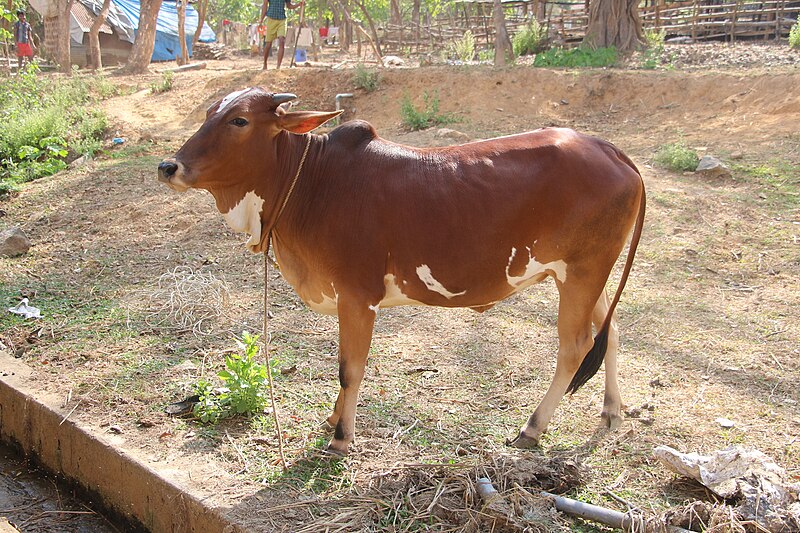
An indigenous breed hailing from the Malwa region in India. It is resilient and adapts to the local climate. Sturdy built and a distinct grey to silver-grey coat. Nimari cattle thrive in challenging conditions. Serves as draught animals, they contribute to agricultural tasks.
The breed’s hardiness and the average price of Rs. 30,000 to Rs. 40,000. It is a valuable asset in sustaining traditional farming practices. Nimari supports rural economies.
Krishna Valley: The Serene Dairy Beauty
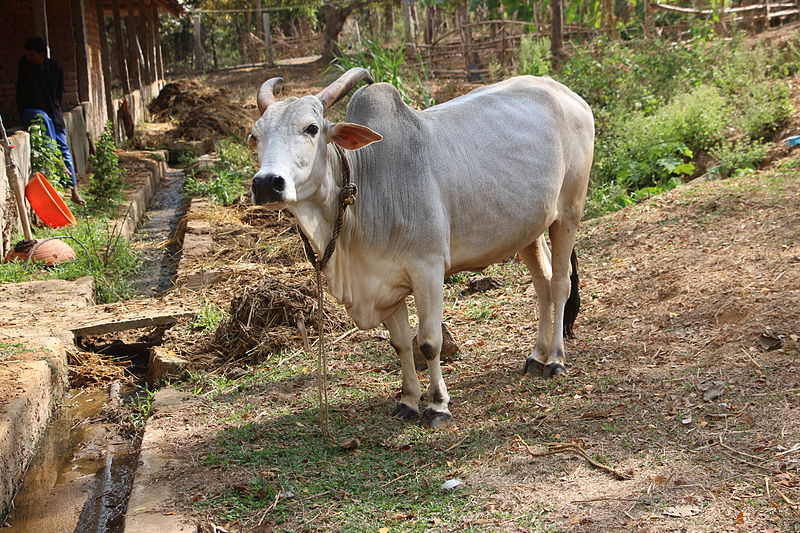
Krishna Valley, an indigenous cattle breed from the Krishna River basin in India. The breed has serene demeanour and excellent milk-producing capabilities. These cows contribute to dairy farming. It provides around 6-8 liters of high nutritional milk daily.
The breed has an average price of Rs. 40,000 to Rs. 50,000. The draught cattle’s graceful appearance, makes them prized assets for dairy farmers. It is significant in supporting the dairy industry and rural communities.
Amrit Mahal: The Majestic Heritage Cattle

An esteemed indigenous cattle breed from Karnataka, India. The breed records in history and cultural significance. Known for their majestic appearance. The cows have a sturdy build and a distinctive white or light grey coat.
Renowned for their draught power. Amrit Mahal bulls are in use in various agricultural tasks serving as work animals. The breed’s historical importance puts the average price of Rs. 50,000 to Rs. 70,000. It is a treasure assets in preserving traditional farming practices.
Hallikar: The Graceful Work Companion
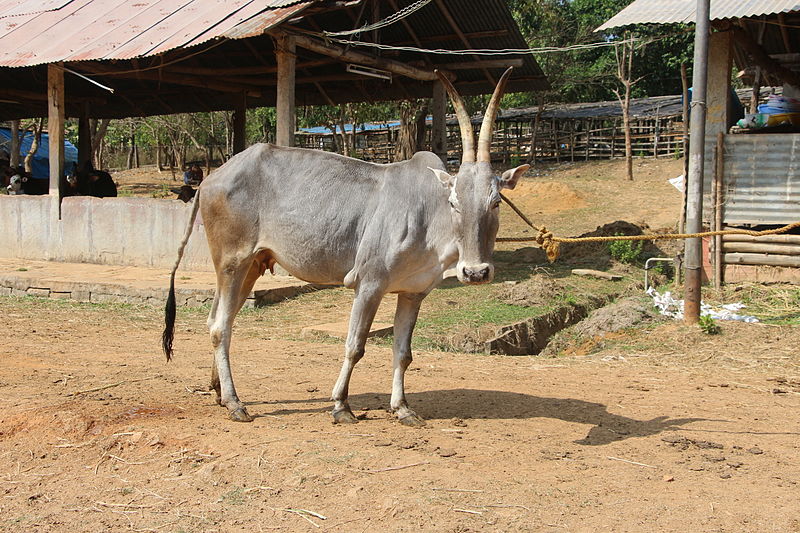
A graceful indigenous cattle breed, Hallikar from Karnataka. It is esteem for its elegance and utility. Hallikar cows have a well-built frame and a lustrous black coat. Renowned for their draught power, they are reliable work companions. While valued for their strength.
Hallikar cows also contribute to dairy farming. They provide an average milk yield of 6-8 liters daily.
Their versatility puts an average price of Rs. 40,000 to Rs. 50,000. It is a prize assets in sustaining traditional farming practices, supporting rural livelihoods.
Gaolao: The Resilient Native Breed
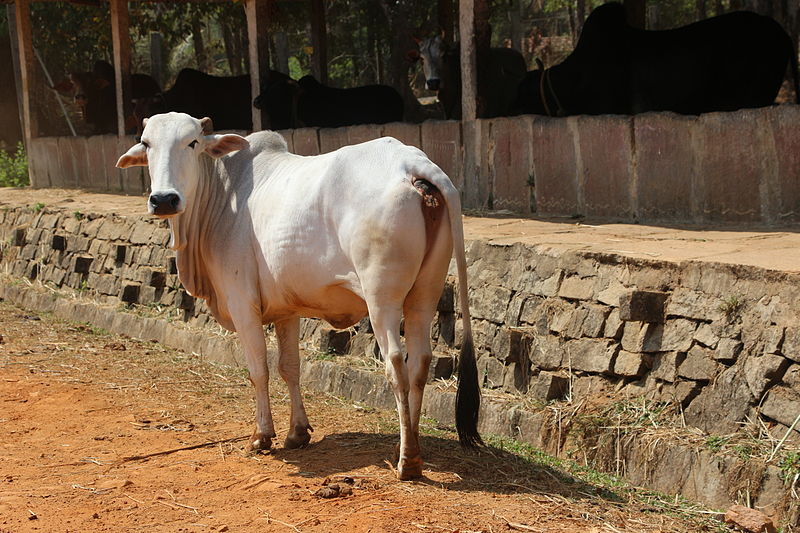
An indigenous cattle breed from Maharashtra, India. The breeds has resilience and adaptability. With a medium to large-sized frame, Gaolao cows boast a distinct white or light grey coat.
Renowned for their draught capabilities. It is a dependable work companions for agricultural tasks. Additionally, they contribute to dairy farming. And provides an average milk yield of 6-8 liters per day.
The breed’s adaptability to local conditions and the average price of Rs. 30,000 to Rs. 40,000. It is a valuable assets in supporting traditional farming practices and rural economies.
Punganur: The Tiny Treasure of Andhra Pradesh

Punganur, an indigenous cattle breed from Andhra Pradesh, India. They have miniature size and unique charm. One of the smallest cattle breeds globally, Punganur cows have a sturdy build.
They have high-quality milk production, providing an average yield of 3-5 liters daily.
The small stature breed’s average price is Rs. 25,000 to Rs. 35,000. It makes it cheap and a valuable assets for small-scale farmers.
Khillar: The Robust Workforce of Maharashtra

The breed is an indigenous cattle breed from Maharashtra, India. It has robust and hardworking nature. With a sturdy frame and a unique grey or light black coat. Khillar cows excel in various agricultural tasks as draught animals. Their strength and endurance make them reliable work companions for farmers.
While valued for their draught capabilities, they also contribute to dairy farming. It provides an average milk yield of 5-7 liters daily.
The average price of breed is Rs. 30,000 to Rs. 40,000. It is a significant assets in sustaining traditional farming practices.
Each cow breed in India has unique qualities and benefits. They contribute to the diversity and resilience of the country’s dairy industry. Farmers and dairy enthusiasts can choose a breed based on their specific requirements. Milk yield, adaptability to local conditions, and disease resistance are some needs.
Challenges Faced for Conservation: Most Popular Cows Of Indian Breed
Indian cow breeds face several challenges that threaten their survival and genetic diversity. While doing research for Most Popular Cows Of Indian Breed astonishing data was found. The increasing use of exotic cow breeds for crossbreeding purposes has led to a decline. The focus on high milk production has overshadowed the importance of desirable traits. The loss of grazing lands, deforestation, industrialization have reduced the habitat and resources. The Indian government has launched several programs to promote indigenous cow breeds.
Rashtriya Gokul Mission
Aims to protect and develop these breeds. It offers breed development, artificial insemination, and the establishment of cattle community.

The National Kamdhenu Breeding Center focuses on research and development. With a focus to improve breeding and management procedures. Furthermore, several state governments provide subsidies and financial aid to farmers. This encourages them to raise and protect indigenous cow breeds.

Financial incentives and subsidies to farmers who rear indigenous cow breeds. It will encourage their conservation and sustainable use.
Community-led initiatives such as breeders’ associations, cooperatives, and self-help groups work towards creating awareness. And provide technical support, and facilitating the exchange of knowledge and genetic material. They also organize cattle fairs and exhibitions. Where they showcase the beauty and importance of Indian cow breeds.
The above article 20 Most Popular Cow Breeds of India: The Divine Dairy Herd aim to protect Indian cows’ genetic heritage. Farmers maintain traditional agriculture, and improve the socioeconomic well-being of rural communities.
Conclusion
So there you have it, a rundown of India’s Most Popular Cows Of Indian Breed that provide us with nature’s nectar. Whether you’re looking to start your dairy farm or curious to know more about the diverse cattle. This guide gives you insight characteristics and qualities of best milk-producing cows. With a long history of revering cows as sacred, it’s no wonder India is home to such a variety.
Enjoy a cold glass of milk or a tasty mithai. And appreciate the divine dairy herd that made it all possible.
Our Digital Imprints:
Get Connected to us on Linkedin- “Transforming Lives“. Creating the magic. Just – Believe ~ Practice ~ Perform
Bonus- Watch Our 7 Steps to Goal Setting on Youtube Videos NuteqEntertainment
Don’t miss out on our most recent resources and recommendations. Join Trendvisionz online magazine today by subscribing!
Get connected to TRENDVISIONZ to stay updated with latest information. All take time out to check our About Us Page. Incase you want to get in touch with us do Contact us. A shoutout to Guest writers.


